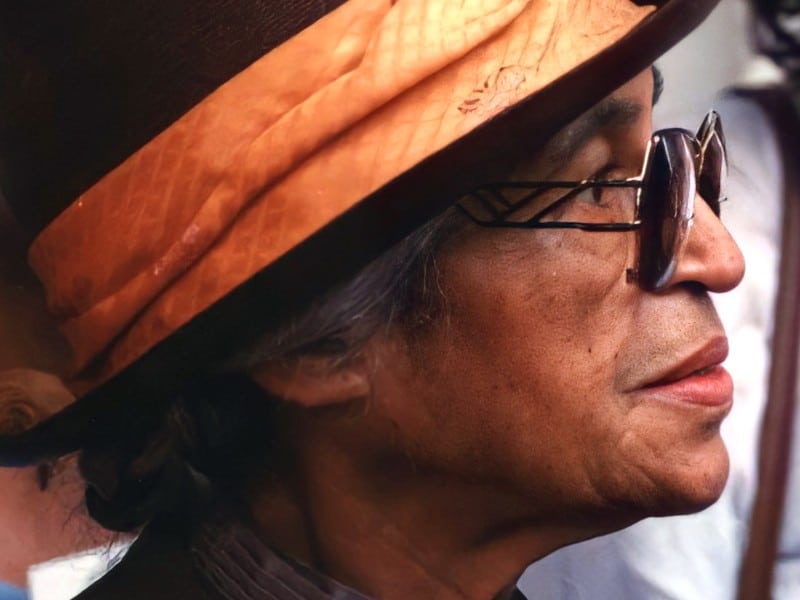Detroit Future City’s report highlights how to build a thriving, sustainable middle-class city
Detroit is trending. It’s growing. But can it sustain? The latest report from Detroit Future City provides a roadmap on how to build a sustainable future, looking to build its middle-class population up.

Detroit is growing and changing, but can it keep up this pace? The latest report from Detroit Future City (DFC), “Making the Middle Class: Leveraging Detroit’s Neighborhoods to Build a Middle-Class City” suggests that in order to be sustainable in the future, Detroit must increase its middle-class population.
The new report is in addition to the “Growing Detroit’s African American Middle Class” report released in 2019. The latest figures show that despite an increase of 2,000 residents, Detroit has lost 67,000 residents since 2012. Over the past 10 years, more than 100,000 Black residents left the city. There are many factors at play, including income, education, housing, neighborhood quality, and more which have an impact on the city’s growth.
The report, which was released in September, is from DFC’s Center for Equity, Engagement, and Research, which utilizes data and insight from community stakeholders. DFC is a self-described think-tank, policy advocate and innovative data-driven strategist engine which aims to create a more equitable and sustainable future for Detroit.
In a press release, DFC CEO Anika Goss says the city of Detroit must advocate for new policies and investments that move Detroiters into the middle class and keep them there.
“A strong middle class will fuel economic growth, foster community stability and pave the way for sustainable progress in Detroit and throughout the region,” she says.
Ashley Williams Clark is DFC’s vice president of equity, engagement and research. Williams Clark says the Detroit nonprofit is focused on a major goal from now until 2030 — laser-focused on building thriving resilient neighborhoods and growing Detroit’s Black population again. This particular population makes up the largest demographic in the city, but is also the demographic that is leaving the city at the fastest rate.
Edward Lynch is the director of research at DFC. Lynch says the latest report pulls data from community surveys, disclosure data and the City of Detroit’s open data portal. After collecting data for a few months, they walk through the data with advisory committees, and gather more interpretations in additional contexts to help elevate areas that might need further research. The numbers date back to 2012-2022, the decade-long lookback helps provides an in-depth picture and a roadmap for the present and future, says Lynch.
Williams Clark says this report is a culmination of a large body of work DFC has been building over the past six years.
“We did a report several years ago that found that 75% of Detroiters had incomes below $50,000,” she says. “When we did that, it was so critical that we look at the middle-class because we’ve seen population loss, we’ve seen what the median household income is in the city, and we’ve seen a decline of just under 100,000 Black residents that have left the city since 2012.”
“As we think about the future for the city, it’s not just about confronting the issues that the city is facing today, but also thinking very intentionally about becoming that middle-class city with the idea that it won’t just fuel economic growth, but also foster community stability and will benefit residents.”
Although Detroit experienced a population milestone last year, when the city saw its first population increase in 60 years. However, 62% of the city’s census tracts have seen a decline in population of more than five percent. In looking for ways to increase middle-class neighborhoods, foster growth and development, and address disparities and equity gaps, the report breaks down a few key areas of focus.
Income, education, housing, and neighborhood quality all factor into whether residents stay in the city or are seemingly forced out. The report shows that incomes remain low among Black and Latino/Hispanic populations, while white incomes steadily increase. These disparities are compounded even more so from the increase of the city’s white population with Bachelor’s degrees or higher levels of education.
When it comes to the city’s housing landscape, the report shows Detroit is split evenly between homeowners and renters, but renter affordability remains an issue. Issues like blight, vacancy, public safety, taxes and insurance also reflect on neighborhood quality.
In order to address these issues, the report details that Detroit must take an intentional, comprehensive, collaborative approach to build the middle-class city. Within this approach, it breaks down a few key next steps: to provide opportunities for all Detroiters to enter the middle class, to renew Detroit’s housing to build middle-class neighborhoods, and to address vacant land through open space.
Lynch says the solution is a two-pronged approach, to increase quality job opportunities for current residents and improve educational opportunities for the city’s youth, and to improve neighborhoods and their respective investments.
“As people enter the middle-class, we would like them to see Detroit as a place that they want to stay,” he says.
Lynch hopes by delivering this report to both the general public and to stakeholders that it can help folks gather around this vision of becoming a middle-class city, and to align policies around building that initiative.
“The report helps people start thinking about the city we are, but also the city we want to be, and kind of the roadmap to get there,” he says.
Photos by Tafari Stevenson-Howard.






